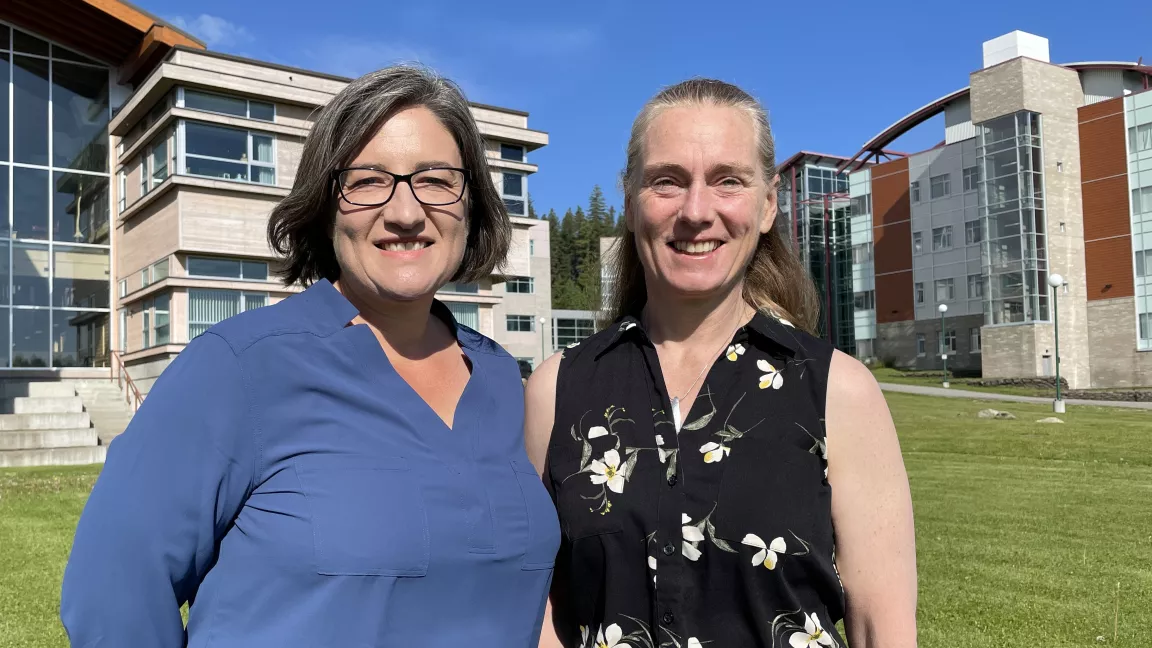Challenges of professional boundaries for rural practitioners
New research brought together expertise from medicine and physical therapy to help examine how rural practitioners manage overlapping relationships in small and remote communities.

Life in a rural community can be very intertwined, with no exception for local health professionals who have to balance friendships with patient care. Close connections are vital for quality of life, so how can practitioners in smaller communities navigate care delivery as professionals while also maintaining their social relationships?
UBC Northern Medical Program Associate Professor Dr. Andrea Gingerich and her interprofessional team undertook two studies to better understand how different rural practitioners manage overlapping relationships to help prepare future health professionals interested in rural practice. The research was supported through a $10,000 grant awarded through the Centre for Health Education Scholarship at UBC.
The studies have been published in the journals Medical Education and Advances in Health Sciences Education.
“I’m intrigued by overlapping relationships, also known as dual roles. I was raised in a farming region and took on a variety of healthcare roles in my hometown of about 2000 people where I needed to navigate overlapping personal and professional relationships,” explained Andrea. “As educators, we see students confronted by overlapping relationships in their clinical education. Teaching them to navigate dual roles is challenging in the absence of best practices, and our regulatory bodies warn us to avoid overlapping relationships to prevent boundary issues.”
The project team, which included Dr. Sean Maurice from the Northern Medical Program and Robin Roots from the UBC Master of Physical Therapy – North (MPT-N) at UNBC along with students from both programs, conducted extensive interviews with rural practitioners to find out how they navigate ethical situations in the context of rural practice.
“We know practitioners in rural, northern, and remote communities are navigating overlapping relationships, but we didn’t know how they were doing it,” said Andrea. “We interviewed family physicians and physiotherapists, including those who had returned to their hometowns to practice or who had lived and practiced in a small community for decades, and identified several strategies that they used to regulate their multiple personal and professional roles while maintaining professional boundaries.”
“This research has helped inform opportunities in the curriculum to better prepare physiotherapy students for clinical placements and practicing in rural communities through a better understanding of how physicians and physiotherapists in rural practice navigate ethical situations,” noted research team member and MPT-N Clinical Lead Robin Roots.
The research findings will also help to facilitate further discussion on the impact of boundaries on rural practitioners’ personal and professional spheres.
"We want to initiate conversations on policies concerning overlapping relationships,” said Andrea. “Practitioners can experience a paradox when their obligations to their professional associations and regulatory colleges conflict with their obligations to their community. Not maintaining professional boundaries risks harm to both patients and practitioners, but avoiding overlapping relationships to prevent boundary violations is not a feasible option for those practicing in rural communities.
“We want to propose developing best practices for navigating overlapping relationships while maintaining boundaries that protect both the practitioner and the patient.”
The study’s multiprofessional focus provided a key opportunity for knowledge gathering across separate health professions and learning from different approaches and perspectives.
“This project was a wonderful example of the benefits of interprofessional collaboration,” said Robin. “The students involved had an opportunity to learn about the similarities and differences in how physicians and physiotherapists navigate similar, and different, ethical situations. The research team had an opportunity to learn from each other and benefit from the diverse connections we each had to community. We talk a lot about team-based primary care and the importance of interprofessional collaboration with students, and this project was an excellent example of that.”
Related research projects are currently underway to further examine how rural practitioners can best navigate dual roles.
“Navigating overlapping relationships is a rural reality,” emphasized Andrea. “Without adequate teaching on maintaining professional boundaries within overlapping relationships, our graduates could enter known practice conditions in small, interconnected communities ill-prepared to put these skills into practice. This is important because practitioners who feel unable to cope with the repeated boundary challenges from overlapping relationships in these often medically underserved communities, tend to leave.
“The strategies we identified can now be critiqued within teaching discussions, analyzed in terms of healthcare ethics, and used to inform future research.”